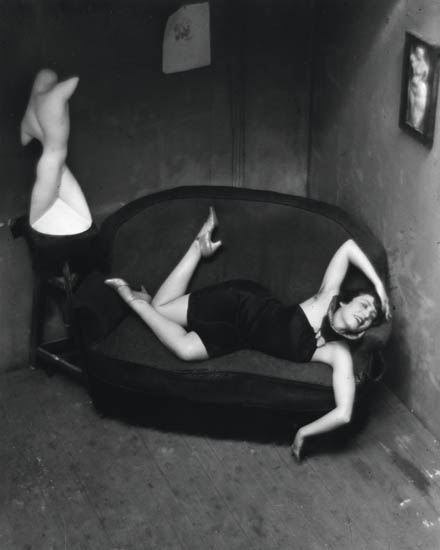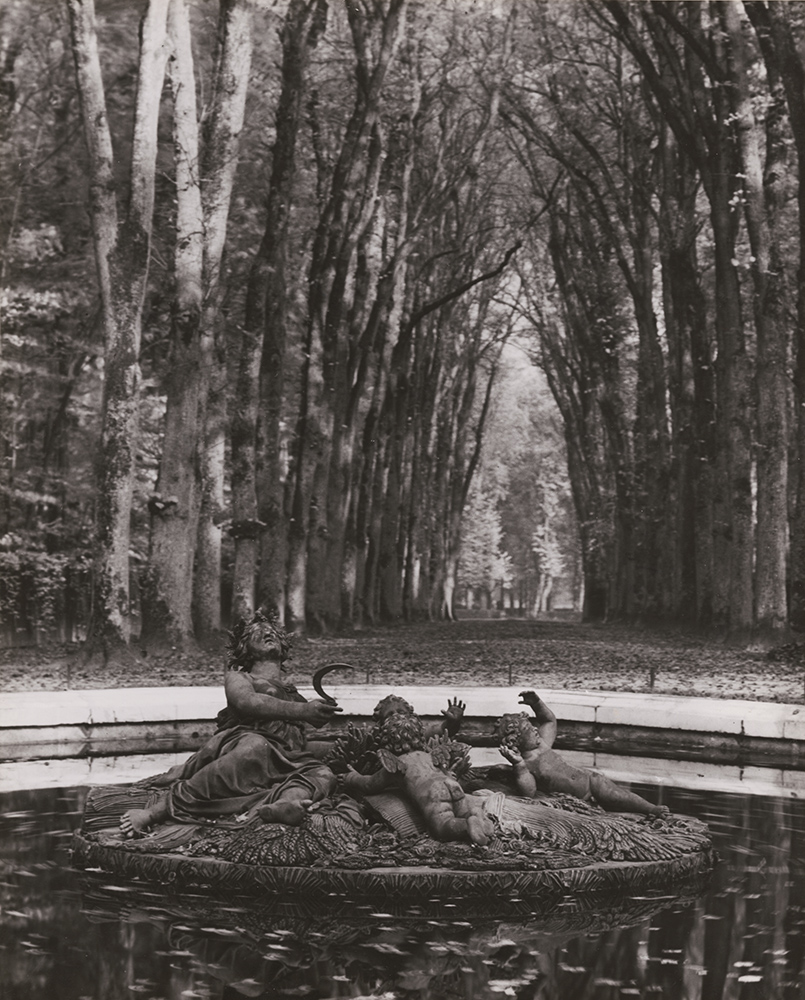
Kertesz - Broken Plate, Paris
Born in Budapest, Hungary, on July 2, 1884, Andor (as he was originally known) Kertész graduated at 18 from the Academy of Commerce and went to work as a clerk at the Budapest Stock Exchange, taking up photography in his spare time. He bought his first camera in 1912.
During the First World War he took his camera with him and photographed his fellow soldiers and also the countryside and the people there. Wounded in 1915 Kertesz was hospitalized for nine months. He made his first distortion photograph "Underwater Swimmer" in Esztergom, Hungary, 1917, which approach he would revisit later on in Paris, in the early 1930s.
After the war he returned to a job that he hated on the Stock Exchange, continuing to take his camera with him around the city and into rural areas.

Kertesz - Lovers or Kiss, Budapest
In 1925 he made a decisive break and left for Paris and began an extremely creative period producing such noted fine art masterpieces as Chez Mondrian, Satiric Dancer, and Mondrian's Pipe and Glasses. Rapidly he became part of the artistic circles in Paris (Mondrian, Eisenstein, Chagall, Calder, Zadkine, Tzara, Colette), soon becoming a well-known photographer, finding work on the new illustrated magazines. His photographs were frequently published by the press in France (Vu, Art et Médecine) and in Germany (Uhu, Frankfurter Illustrierte).
A couple of years later in 1928, Kertesz bought a new camera, a 35 mm Leica, whose small size and rapid operation perfectly suited the kind of photography he wanted to do.
Among photographers who were aided or influenced by him in Paris at this time were his fellow Hungarian Brassai, and a young French student, Henri Cartier-Bresson. Photographer Rogi-Andre (Rosa Klein) was his wife for a while. He broke up with her in 1931.
1933 was an important year for Andre Kertesz. In 1933, he made his famous series of distortions. His first book, Enfants (Children) came out in 1933. He also married his second wife, Elizabeth Saly, his Hungarian sweetheart.
In 1936, at the top of his art, he decided to leave for New York, after signing a contract with the Keystone photo agency. Having relocated, Kertesz found a cool reception. His distortions of nudes were viewed as pornographic and "too human", even by the likes of Beaumont Newhall. He found himself relegated to studio work at Keystone, despite his contract that had stipulated a photojournalist role. Despite the lack of acceptance of his personal style, he continued to create his own work. But Kertesz felt cutoff by the language, the culture and the response to his work.
After leaving Keystone, Kertesz worked for Alexey Brodovitch, who was artistic director at Harper's Bazaar. Day of Paris, conceived by Alexey Brodovitch, was released in 1945.
André Kertész, employed by Condé Nast editors from 1949 onwards, regularly contributed to House and Garden. Kertesz was still disappointed in the response to his work in the U.S. Furthermore, a series of extenuating circumstances--including Elizabeth's business success and the impending war--made returning to Europe impossible. In the midst of his relative anonymity, with an unsatisfying job and few peers with which to share his art, Kertész made some of his most complex, lonely, and hauntingly beautiful images. This period produced such elegant images as Melancholic Tulip and Washington Square.
In the early 1950s, he started using color film.
The beginning of Kertész's rebirth was marked by his resignation from House and Garden in 1962. Then in 1963, he was miraculously reunited with his negatives, prints, and correspondence from pre-war Paris, which he had thought to be lost (they had in fact been buried in a bomb shelter for nearly 30 years).
In 1964, John Szarkowski mounted a one-man show of Kertész's fine art work at the Museum of Modern Art; finally Kertesz began to find some of the recognition that he had so long sought in America. Although he found greater recognition through the latter years of his life, there remained a pronounced melancholia to his work, particularly in his images from the time leading up to Elizabeth's death from lung cancer. Devastated by the loss his beloved wife, he found solace in photographing carefully constructed still life images, and relief in devoting his energy to his career.
His talent was acknowledged worldwide and exhibitions on his work multiplied, as well as publications: 60 Years of Photography, 1912-1972; J'aime Paris (1974); Distortions (1976); and Hungarian Memories (1982).
He traveled more and more often to France. He died in New York on September 27, 1985.
André Kertész is one of the most important fine art photographers of the 20th century. A synthesis of ethics and aesthetics, his work foreshadowed different avant-garde trends, although remaining deeply attached to humanistic values.
Author John Szarkowski said about Kertesz's work: "In addition to this splendid and original quality of formal invention, there is in the work of Kertesz another quality less easily analyzed, but surely no less important. It is a sense of the sweetness of life, a free and childlike pleasure in the beauty of the world and the preciousness of sight."
Exhibited and Sold By
Contemporary Works / Vintage Works, Ltd.
258 Inverness Circle
Chalfont, Pennsylvania 18914 USA
Contact Alex Novak and Marthe Smith
Email info@vintageworks.net
Phone +1-215-518-6962
Call for an Appointment














Share This